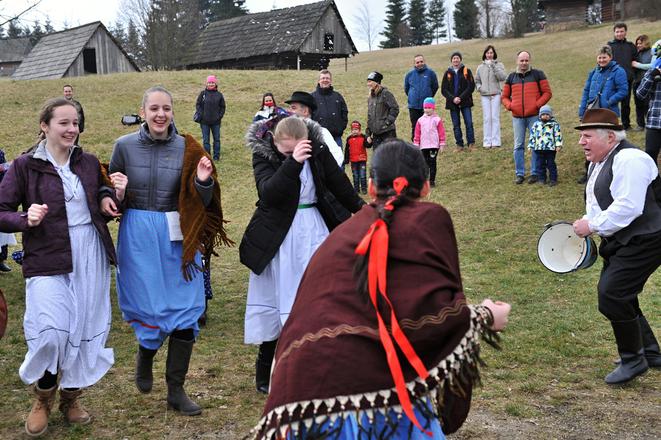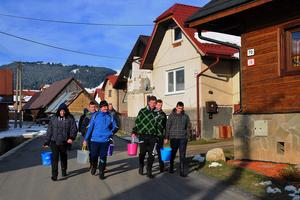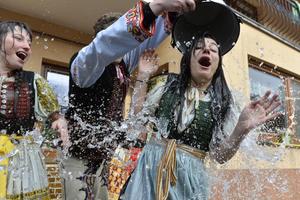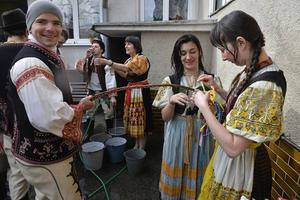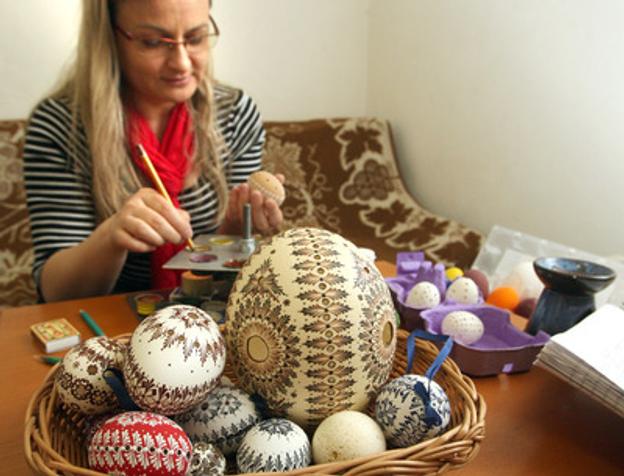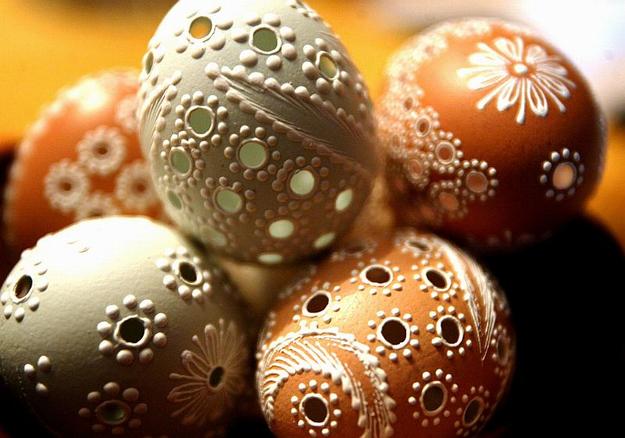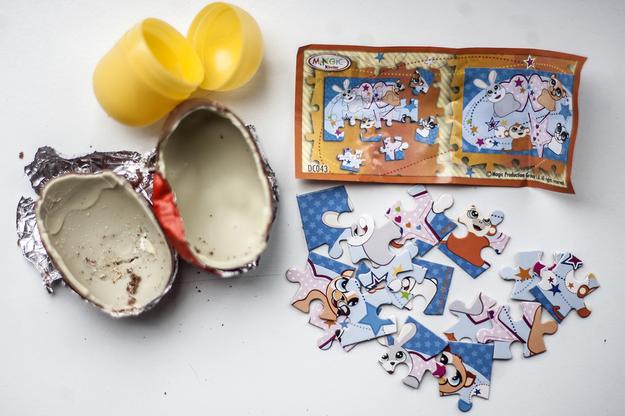Slovak traditions surrounding the moveable Easter holiday are quite unique: unlike Anglo-Saxon or other European rituals, men pour cold water on women and lash them with willow osiers. For this, they even get rewarded: each of the “whippers” (šibač) shall receive hand-decorated Easter eggs and some snacks, adults can also get alcohol.
“Pouring with ice-cold water belongs to pre-Christian habits,” Nádaská explains. “We know, for example, that all Slavonic tribes used to keep this habit. Water from a brook or a river was always considered “water of life”, i.e. that various positive features were attributed to it. In Slovak fairy tales, this water was even able to bring people and other creatures back to life, and this Easter tradition is based on “magic of the similar”; which means that the cold water from a brook or river, when used by a boy or man to pour over a girl, passes on its good features when touching the skin. Thus, women were believed to be made fit, rejuvenated, nimble, beautiful – all characteristics women needed in their lives.”
Nádaská added that in Slovakia, women living prevailingly on farms needed to be efficient, able to bear children quickly and successfully, and all these aspects were to be delivered by spring waterings.
Whipping is a similar case, she added. Young willow osiers were always used in western Slovakia to make the special whip, or korbáč. Willow is the first tree to get fresh new “sap of life” in the spring, and in the same way as the water, the good features of the young osiers were meant to transmit to the body of a girl or woman.
Past and present traditions
The “true” pouring and whipping can be found only in rural areas; in towns and cities, the rituals have been changed. A hundred years ago, it used to be completely different - the activities started at dawn and had to be finished before noon. In urban areas, pouring with cold water has been gradually replaced with spraying with perfume – the primary meaning is lost, obviously. Some places, tap water is used, which is understandable, as it would be hard to find natural water here, the ethnologist said.
Also, there were differences among regions regarding who could be whipped and poured with water. In some regions, e.g. in Liptov, only single young girls were treated like this, while it was forbidden to visit married or older females. In other places, like in Upper Nitra region, it was matter of pride and prestige if a widow or a mature woman was whipped and poured with water, and it was commonly done.
One can see a difference compared to original habits also in the rewards: in the past, snacks or a handmade Easter egg were offered by the girl to the boy, whereas currently chocolates or sweets (or chocolate eggs) and cash are offered. “These rituals have been incorporated in the original tradition during the second half of the 20th century,” Nádaská said.
Gradually, in cities these traditions are rather rare to be found, she added, especially in the biggest ones like the capital, and if observed, mostly in families. While in villages, men used to tour all the houses consecutively. “However, in smaller towns, mainly in eastern Slovakia but also in villages elsewhere, folklore ensembles appear which are active and proud of their habits’ appeal and try to revive and keep them alive,” the ethnologist said. “Boys don folk costumes and go pouring water and whipping the girls. These are signs giving hope that Easter traditions will not go extinct, but we cannot claim that „šibačka“ (whipping) and „oblievačka“ (pouring water) are mass habits. Each year, they are declining.“
I can harbour hope, Nádaská said, that in 50 years, young people will still know what “šibačka” and “oblievačka” are, and that it has its own roots and sense – that it is not some kind of abuse or violence against women, with them being beaten in public, but rather it used to be a magi ritual of rendering spring vitality and power to women. “And I have the comfort in hoping – as I already mentioned – that ever more young people are now trying to revive these habits, although not on a mass scope and spontaneously but rather in folklore groups,” she added. “Surprisingly enough, even in such a big city and melting pot as Bratislava, people seem to be following this trend: despite people settling here from all over Slovakia as well as foreigners, there are more than 100 folk ensembles which try to keep Easter traditions, dress in folk costumes and go pouring water and whipping even in the suburbs and huge housing estates.”


